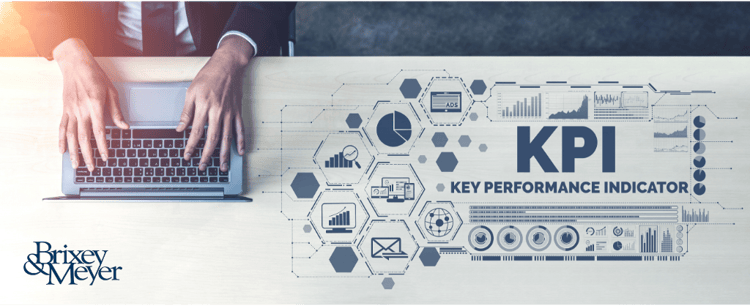Replace Lagging Performance Indicators with Leading Ones
Due to many factors, your financial results for YTD 2020 very likely differ from original forecasts.
To limit surprises for the remainder of 2020, consider replacing your lagging KPIs (Key Performance Indicators) with leading KPIs.

Replacing lagging indicators with leading indicators:
Lagging KPI: Is a metric that measures outputs. A lagging KPI is much easier to track, but once it’s known it’s no longer actionable. Ex: Revenue, acquisition costs, margin %, etc.
Leading KPI: Is a metric that measures inputs. A leading KPI is harder to identify and track, but it’s still more timely and actionable. Ex: Proposals sent, opportunities added, forecasted machine utilization, etc.
In running a 400-person distribution center, we replaced a lagging KPI with a leading KPI. As detailed below, this resulted in lower cost and improved employee morale:
- Lagging Indicator: Our distribution center had an SLA (Service Line Agreement) requiring orders received to be shipped within 24 hours. When we learned that the number of shipments over 24 hours had spiked, we reacted quickly and required the shipping team to work overtime to make up for the late shipments.
- Outcome: We fixed the problem once it was identified, and the team went home tired and disgruntled by the surprise.
- Leading Indicator: With the same distribution center, we recognized the need to improve our SLA compliance. To improve, we needed to anticipate, rather than react to increases in orders. We worked with our marketing team to anticipate scheduled promotions and combined this with historical site traffic trends. Once we did this, we could see 7-10 days in advance to what we anticipated order volume. We staffed the appropriate number of extra employees, and we staffed appropriately to handle the increased volume.
- Outcome: While the lagging KPI identified and addressed the problem…it did NOT prevent the problem. Once we correlated the inputs (website traffic), with outputs (shipments due out in 24 hrs.), this led to cost savings (straight time rather than overtime) and improved internal morale (avoiding last minute scheduling changes).
Other Considerations:
Test and Refine: You need to experiment with various ratios of inputs to outputs to best identify appropriate leading indicators. As well, the further in the future you try to forecast these correlations, the more difficult it is to predict. I suggest trying different ratios at 6-month, 1 month, 1 week, and daily KPIs (when appropriate), so that you continue to forecast and hone-in on forecasted demand.
Prioritize: Since leading indicators can be difficult to pinpoint, it’s important to prioritize. For instance, if you have a strategic initiative in 2020 to reduce your COGS, focus on your largest COGS expense and hone appropriate KPIs for that.
Meeting/Reporting Cadence: Ensure you have the right team members reviewing their KPIs during the right timeframe. This means that your Shopfloor Supervisor will be the one reviewing your direct labor metrics daily and your VP of Sales will likely be the one reviewing your number of ‘appointments booked’ weekly. Review frequency should correspond to how actionable the metric is, and the one monitoring the metric should be the one who owns the result.
Overall: Do not fall in to the trap of constantly reacting to results. Although you can’t 100% predict the future, if you limit surprises, your financial results will benefit. Leverage these tips to design your dashboards to include leading KPIs. You, your team, and your future financial results will thank you!

